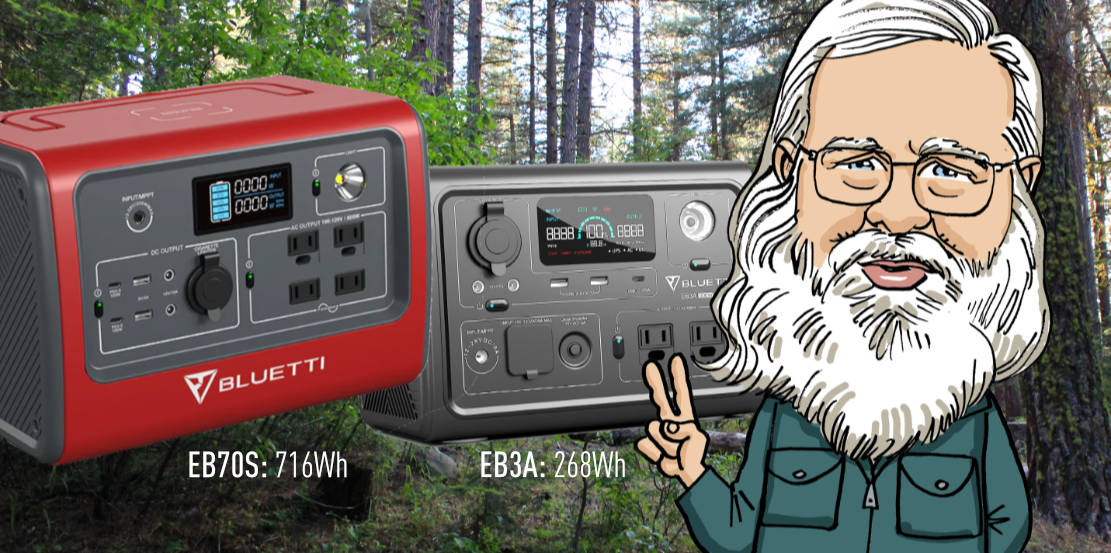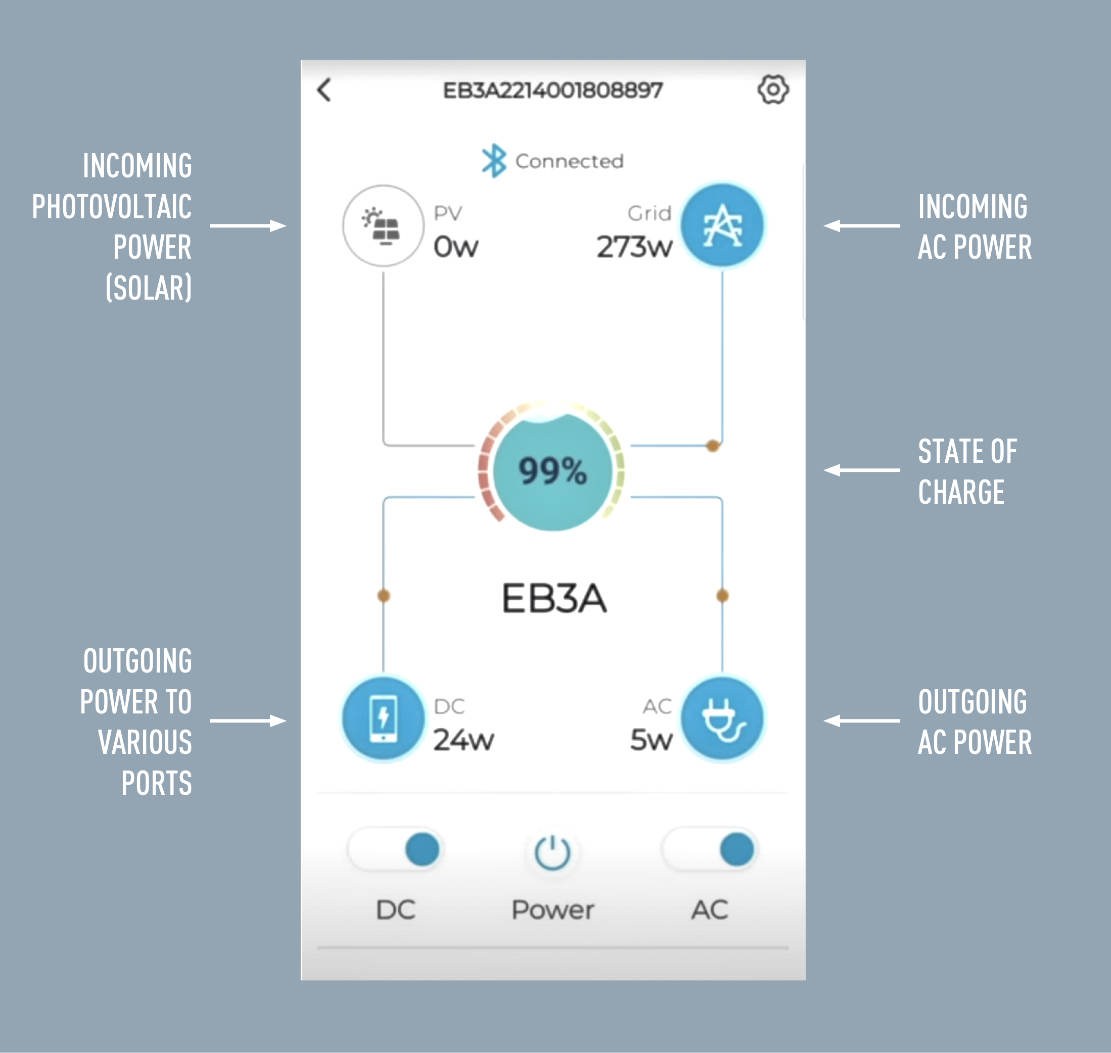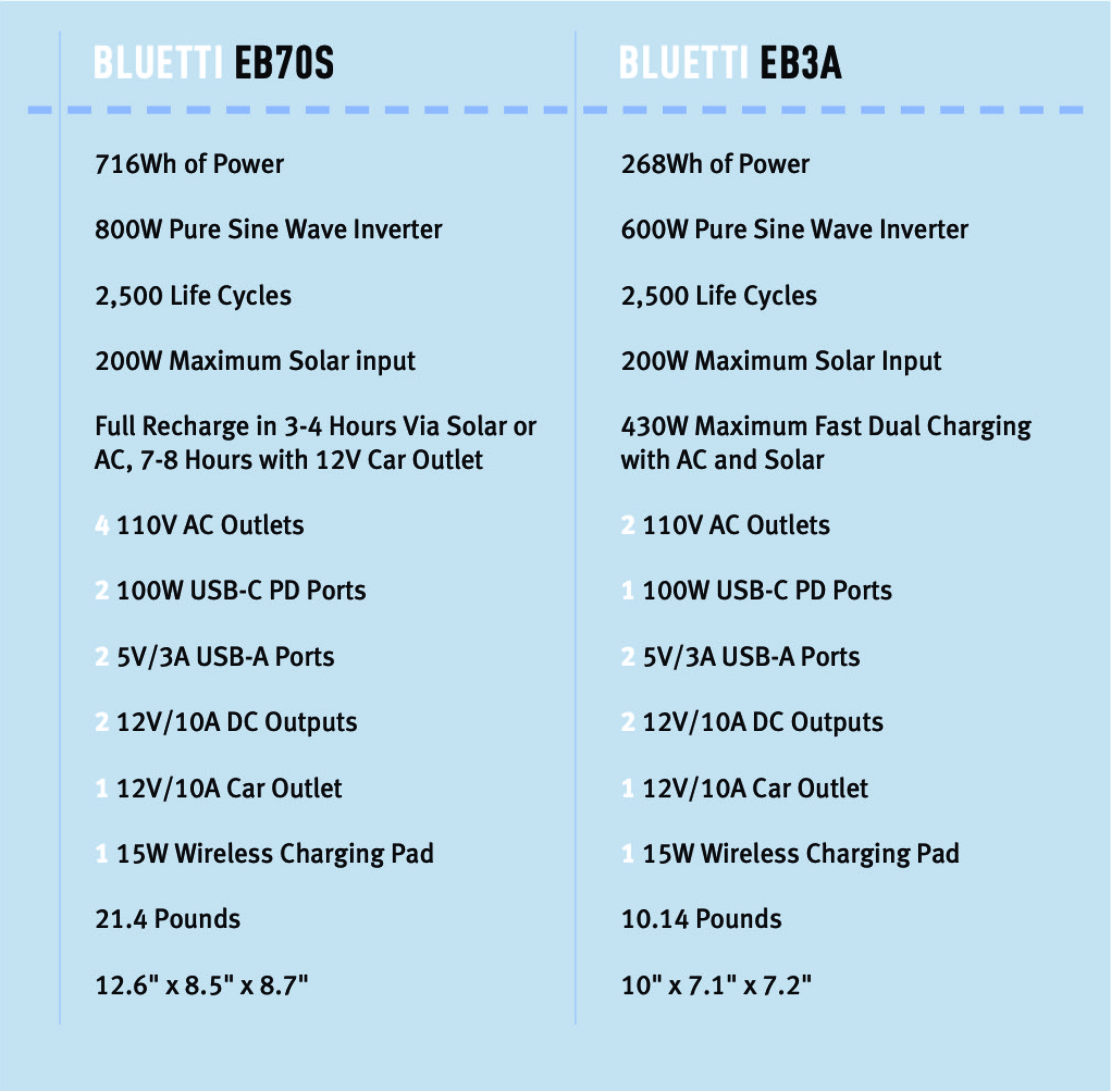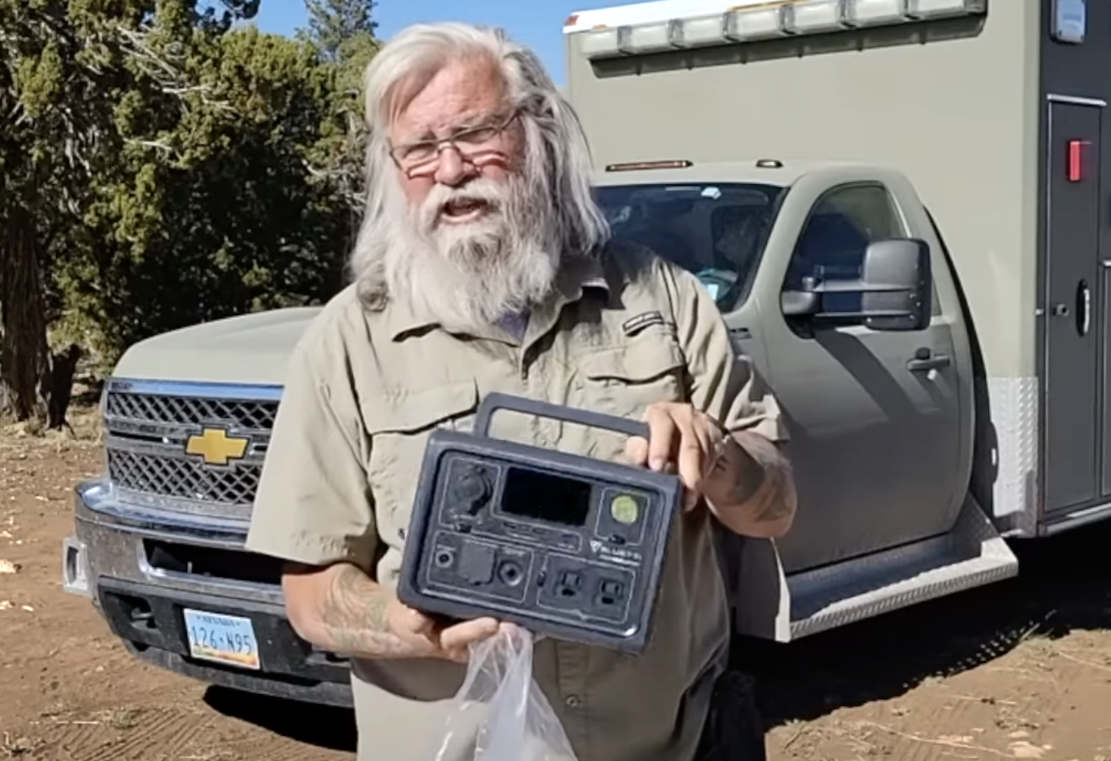
YOU PROBABLY KNOW BY NOW I’m a big fan of Bluetti power stations. This time I’m going to look at two of them: the EB70S and the brand new EB3A.
Here’s why I prefer Bluetti. First of all, they use LiFePo4 batteries. Those are good for up to 2,500 life cycles while the battery technologies typically used in some of the well-established brands have a lifespan of only 500 cycles.
Secondly, Bluetti has proved they listen to user feedback and make the improvements we want. For example, both of these power stations have flat tops with folding handles instead of a big rigid handle sticking out. That makes it easier to use the built-in wireless charging pad, and it means it takes up less space when you stow it away. They also come with an adapter for MC4 connectors—the industry standard for solar panels—so you aren’t stuck using a proprietary panel. And, speaking of panels, you can connect up to 200W of solar for faster, more complete charging. Bluetti also has an app that lets you monitor and control your power station with your phone.

So, let’s compare the EB70S and EB3A

Which one is right for you?
The answer depends on your power needs. Obviously, the EB3A has less than half the battery capacity and its inverter can’t handle as large of a load as the EB70S. So you wouldn’t be able to run a refrigerator, microwave, or air conditioner. But it might be enough if you just need to charge your electronics, run lights and a fan, and use some type of low-power electric cooker.

The EB70S sort of fills the Goldilocks just-right spot in the Bluetti line. The next step up is really large and expensive. The EB70S sells for about a hundred dollars more than 500W power stations from other brands, but you get more power—and a LiFePo4 battery. I think it’s an excellent deal. You can do more things with that extra 200 Watts, or have more power left between chargings.
Either way, you would end up with a very high quality, feature laden power station.

Is a power station right for you?
When you buy a power station, you’re buying plug-and-play convenience. The battery, charge controller, charger, inverter, and outlets are in one handy package. That might be exactly what you want.
The alternative is to buy a LiFePo4 battery and a 100W or 200W solar kit from someone like Renogy and assemble and install it yourself. Or pay someone to install it. You’re going be better off in every way. (For example, when a power station battery eventually reaches its end of life, you can’t just replace it. You have to replace the whole power station.) I know a lot of you can’t install a solar kit, and you don’t have the money to pay someone to install it. It’s not practical for you. That’s okay. Go with a power station—if you can afford it.

Hello Bob, I don’t know if you send out personal answeers or not but here goes. Just read your latest post and loved it! I think the bluetti eb70s is what I need. I am in the process of building a vehicle from the ground up. 35 ford pickup, custom frame, 166″ wb, all modern running gear with a 6 x 10 cargo trailer mounted on the back. My primary requirements are small compressor type fridge, just big enough for drinks and lunch meat, I don’t cook much! A fantastic fan at night, my cpap machine which label says draws 90 watts, maybe a small 8″ fan. I’m planning using 200 watts of portable solar panels when I’m parked and charge my bluetti off my truck while driving in day.
I was an owner-operator in the trucking business for 45 yes with the last two trucks having big sleepers with all the amenities so I’m pretty familiar with some of this stuff.
Hope to see you in Quartsite in January if I can get this project done! I’m about 50% there now. Thanks a bunch in advance and keep up the good work! Johnny
Hi Bob !! Will those power stations work at our sticks & bricks as back up devices ?
Thanks in advance for the answer.
Yes, that’s one of the ways power station companies promote these things. Of course, you couldn’t power and entire house or apartment, but you could run a few things for a few hours.
Bob, great information and thanks. Have you heard of LIPOWER? I am trying to decide between Bluetti and Lipower. The Bluetti EB70S seems great but I am considering going to the LIPOWER MARS 1200 System for more capacity. Any help you can offer? Many thanks in advance.